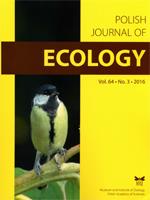Urbanization affects the ecological and behavioral traits of various species of animals, including birds.We present results concerning long-term fluctuations in breeding densities of nest-box populations of the Blue Tit Cyanistes caeruleus and the Great Tit Parus major in two, structurally and floristically contrasting types of habitat (an urban parkland and a rich deciduous forest) located 10 km apart, in central Poland. This study was conducted in 1999–2012 in the parkland site and in 2002–2012 in the forest site. We found a strong correlation of year-to-year changes in breeding densities of Great Tits between the parkland site and the forest site and a lack of such a correlation in Blue Tits. Breeding densities of Great Tits were much higher in the parkland than in the forest area every year during the study period. Annual changes in breeding densities were not correlated between the species studied. The North Atlantic Oscillation Index (NAO-winter index) tended to influence the density dynamics of the two bird species in the forest area but not in the parkland area.
How to translate text using browser tools
1 September 2016
Long-Term Changes in Population Density of Nest-Box Breeding Great Tits and Blue Tits in Two Contrasting Habitats in Central Poland
Michał Glądalski,
Jarosław Wawrzyniak,
Mirosława Bańbura,
Adam Kaliński,
Marcin Markowski,
Joanna Skwarska,
Piotr Zieliński,
Jerzy BaŃBura
ACCESS THE FULL ARTICLE

Polish Journal of Ecology
Vol. 64 • No. 3
September 2016
Vol. 64 • No. 3
September 2016
breeding density
Cyanistes caeruleus
NAO
Parus major
population dynamics
urban population
wild population




